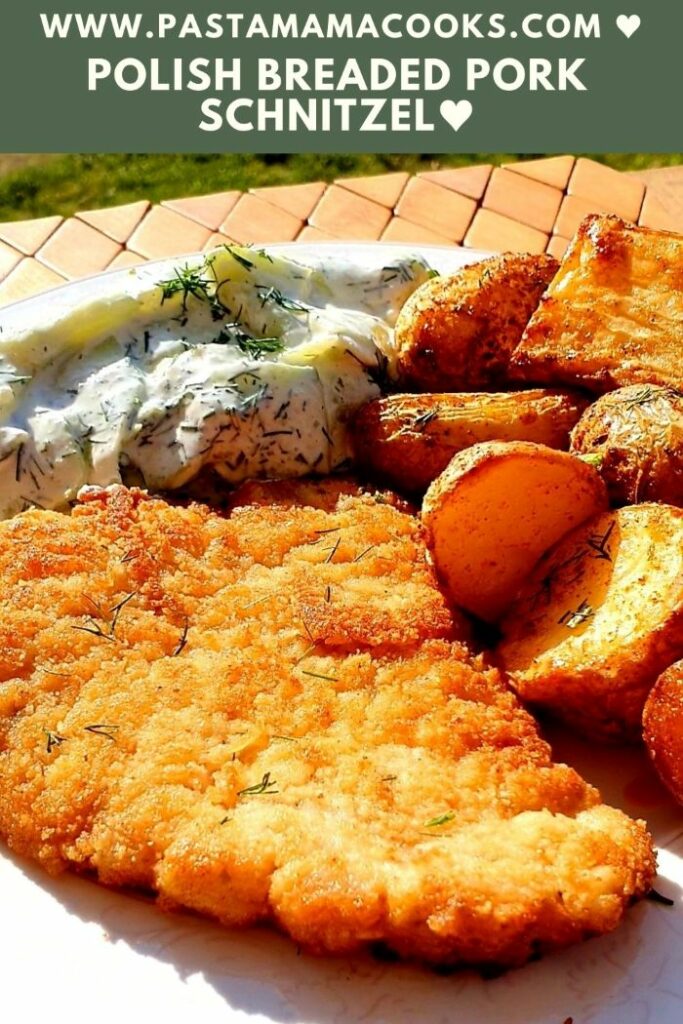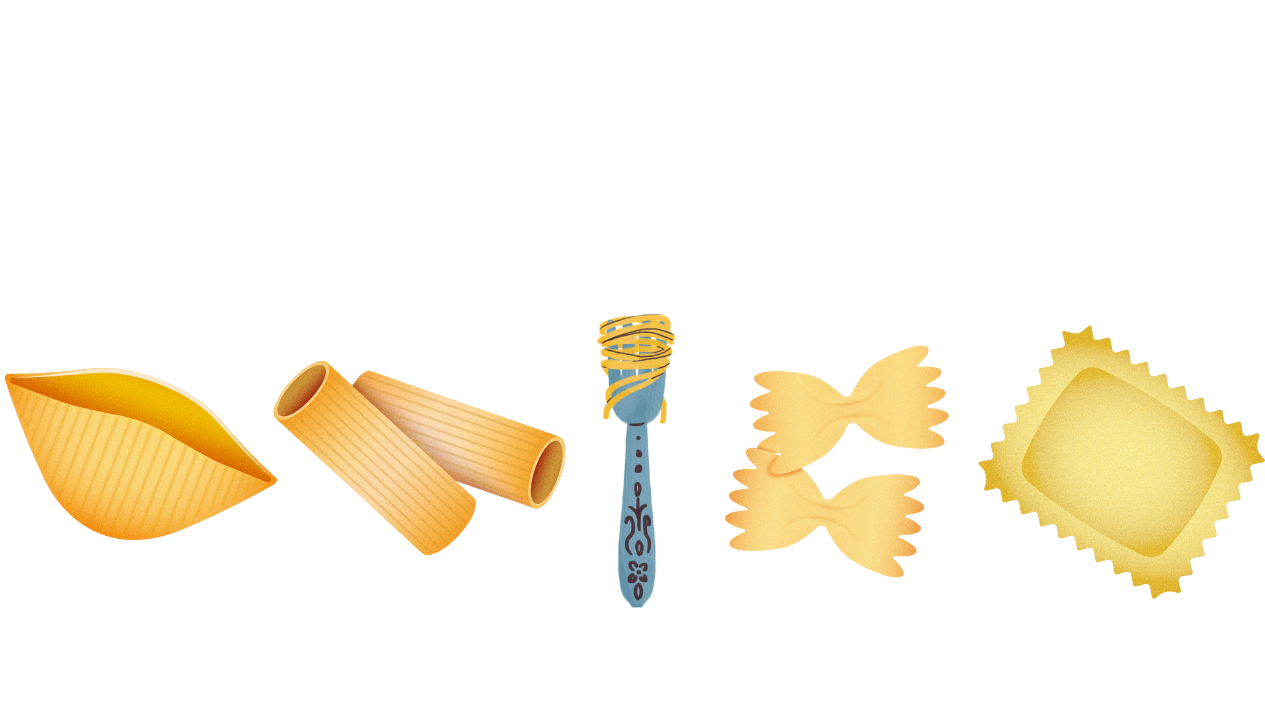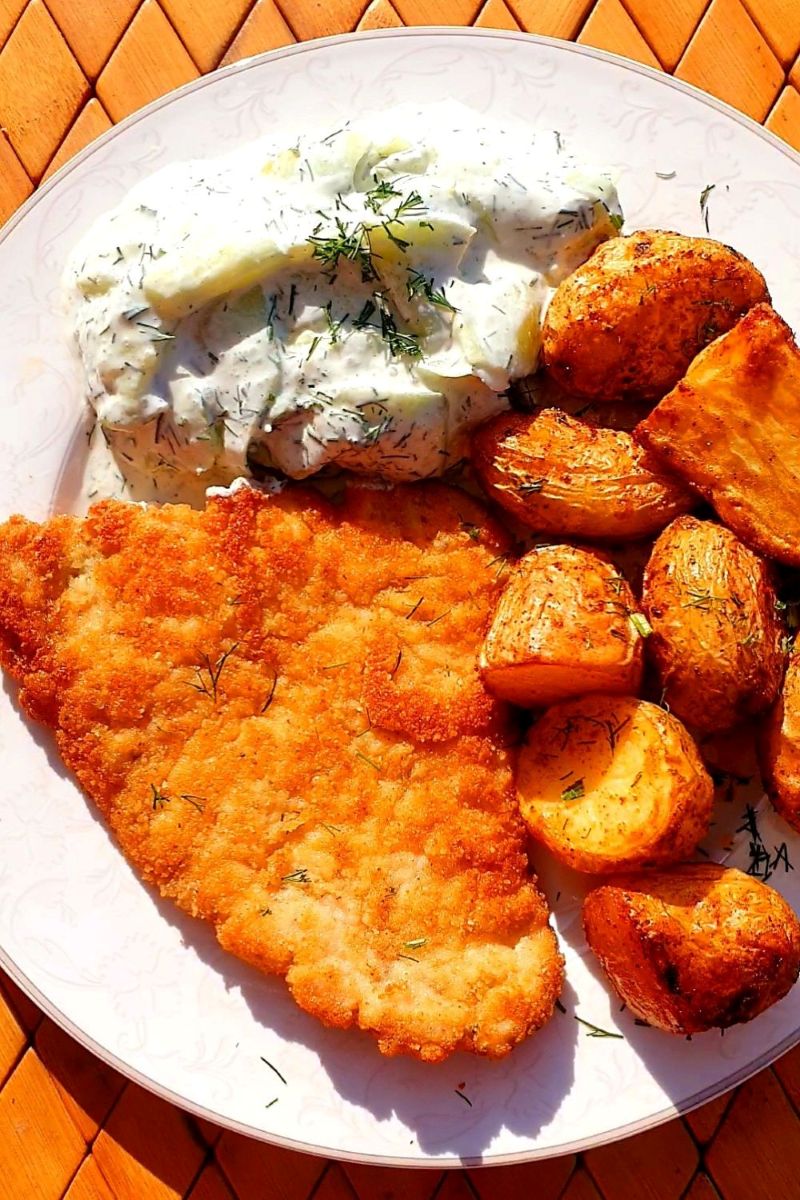The Polish breaded pork cutlet (kotlet schabowy) is one of the most beloved dishes in Poland—a true classic that no Sunday dinner would be complete without. But listen up! If you try my method for making the perfect kotlet schabowy just once, you might never go back to the old way! 😉
My secret? A special marinade—but not just any marinade! I soak the pork in milk with onions, garlic, spices, and my secret ingredient (which I won’t reveal just yet, but trust me—it makes all the difference!). The result? A cutlet that’s unbelievably juicy, flavorful, and so tender it practically melts in your mouth.
My family went absolutely crazy over these. Well… once you try them, there’s no turning back! 😉
Watch how to make it! ♥
Why You’ll Love This Recipe
🇵🇱 A Taste of Poland: This isn’t just any breaded pork cutlet—it’s kotlet schabowy, a dish that’s been a Sunday dinner staple in Poland for generations. One bite, and you’ll understand why it’s a national favorite!
🍽️ Crispy, Juicy, Irresistible: Golden, crunchy coating on the outside, incredibly tender and juicy on the inside—this cutlet is pure comfort food at its finest.
👨🍳 Easy to Make, Hard to Resist: With just a few simple ingredients and a foolproof method, you’ll be serving up restaurant-quality Polish schnitzels in no time.
💛 Nostalgic & Family-Friendly: Whether you have Polish roots or just love discovering traditional dishes, this recipe brings that warm, home-cooked feel straight to your table.
Ingredients You’ll Need
🥩 Pork Cutlet (Kotlet Schabowy) – The key to the perfect schabowy starts at the store! Choose boneless center-cut pork loin, which is the most tender and juicy. Look for a light pink color with fresh white marbling—and don’t trim off all the fat, as it adds flavor! Avoid meat with a grayish tint, as it’s not the freshest.
🔪 Thickness Matters! – The ideal cut is about ½–¾ inch (1.5–2 cm) thick. Too thin, and it will dry out when frying; too thick, and… well, you’ll end up with a pork steak instead of a crispy cutlet! 😉 After slicing, pound the meat gently (best done between plastic wrap) to ensure even cooking while keeping the meat’s natural juices inside.
🍞 For the Crispy Coating: – Flour, eggs, and breadcrumbs—each step is essential for that perfect golden crunch! For extra flavor, you can mix a little salt and pepper into the flour. When it comes to frying, lard or clarified butter will give the best traditional taste, but vegetable oil works too.
🥛 Flavor-Boosting Marinade: – A soak in milk, onion, garlic, marjoram or oregano, salt, pepper, and a secret twist—mustard! (Trust me, this makes a difference! 😉). This step infuses the pork with extra flavor and makes it incredibly tender and juicy.
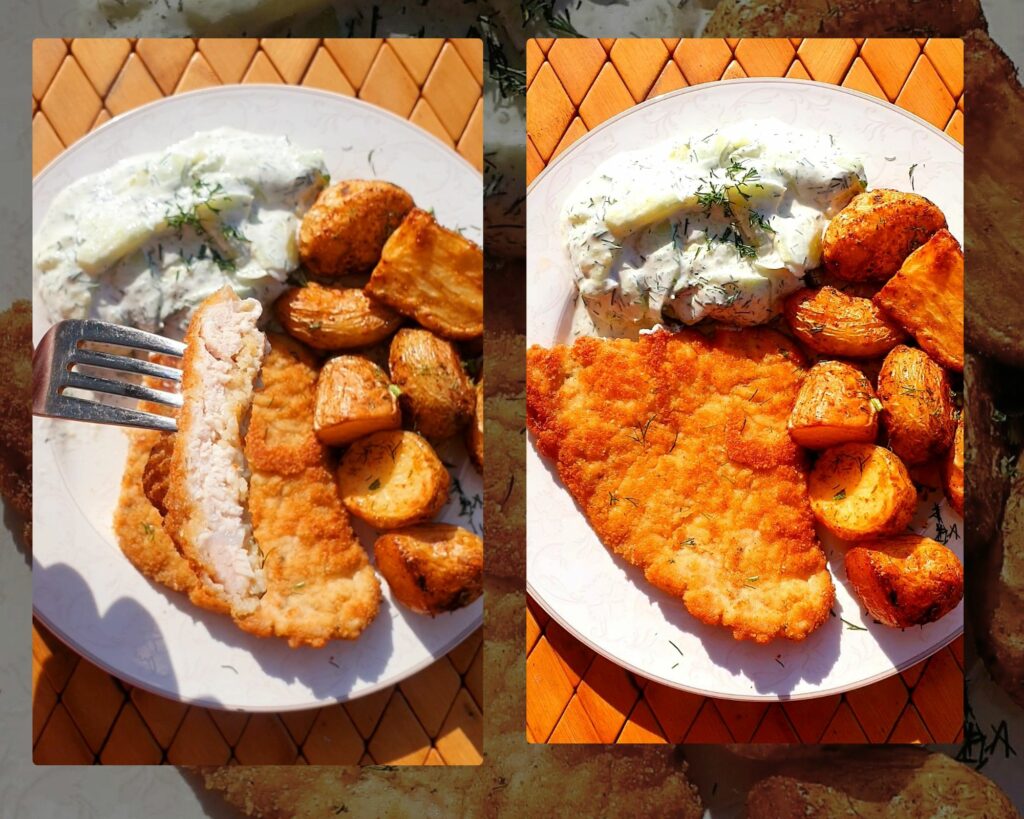
What’s the Best Fat for Frying Pork Cutlets?
The best fat for frying pork cutlets? Lard. Yes, you heard that right—good old-fashioned pork lard! 😉 It gives the cutlets a rich, traditional flavor and makes the breading extra crispy. Lard also has a high smoke point, allowing the cutlets to fry evenly to a perfect golden brown without burning.
If lard isn’t your thing or it’s hard to find, you can also use canola oil or clarified butter (ghee). Both work well, though the flavor might be a bit milder compared to lard.
No matter which fat you choose, make sure there’s plenty of it in the pan—the cutlets should be able to fry freely and be fully coated for that perfect, crunchy crust. 😍
How to Make Perfect Pork Cutlets (Step by Step)
STEP 1.
Start by preparing the meat. Place the pork on a cutting board and grab a sharp knife (preferably a long, wide one). Cut the pork into cutlets of roughly the same thickness (about ½ inch or 1.5 cm). This ensures they fry evenly and are cooked through at the same time. If the pork has thicker layers of fat, gently slice through them in a few spots. Once cut, the pork cutlets are ready to be pounded.
How to Pound the Meat? Gently but firmly tap the meat with a meat mallet. Start from the center and work your way outward, aiming to keep the thickness about ¼ inch or 0.5 cm. Don’t hit too hard to avoid tearing the meat, but firm enough to make it tender and juicy. Pound both sides of each cutlet. The key is to do this with care—too much force can damage the meat’s structure. It’s best to start with one side, then flip the cutlet over and gently pound the other side once it’s flattened.
Why Cut the Fat? Cutting the fat around the edges of the cutlet helps prevent it from curling up while frying. The fat and connective tissue shrink when exposed to high heat, which can cause the cutlet to curl or shrink on the pan. By making a few small cuts through the fat, you allow the meat to cook evenly, keeping the cutlet flat, well-cooked, and ensuring a crispy coating all around.
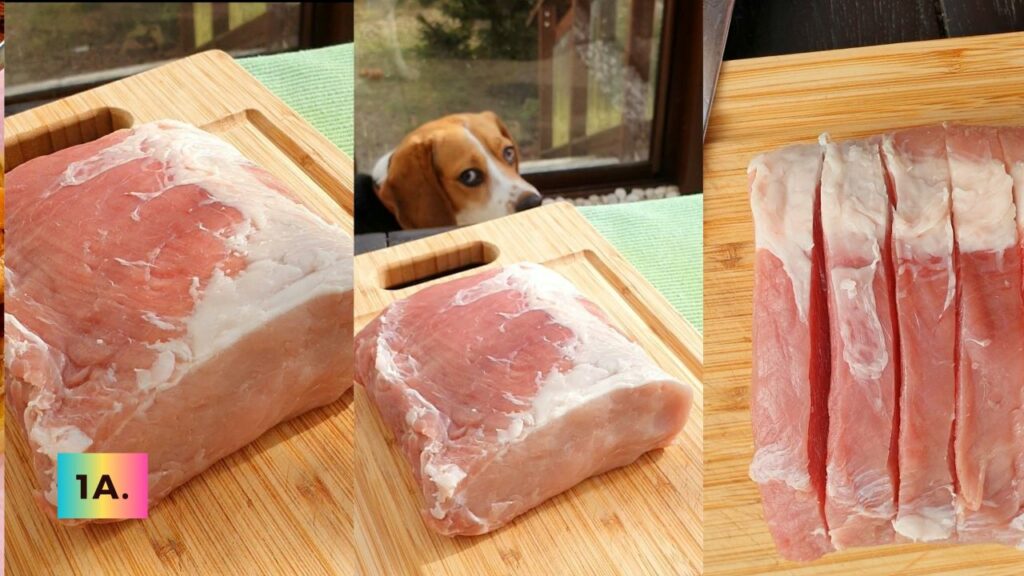
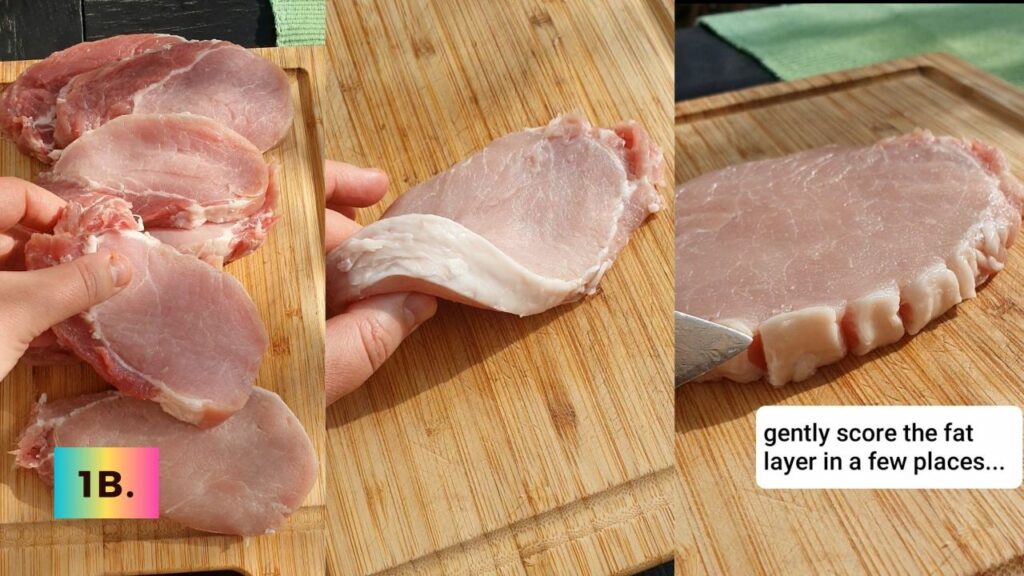
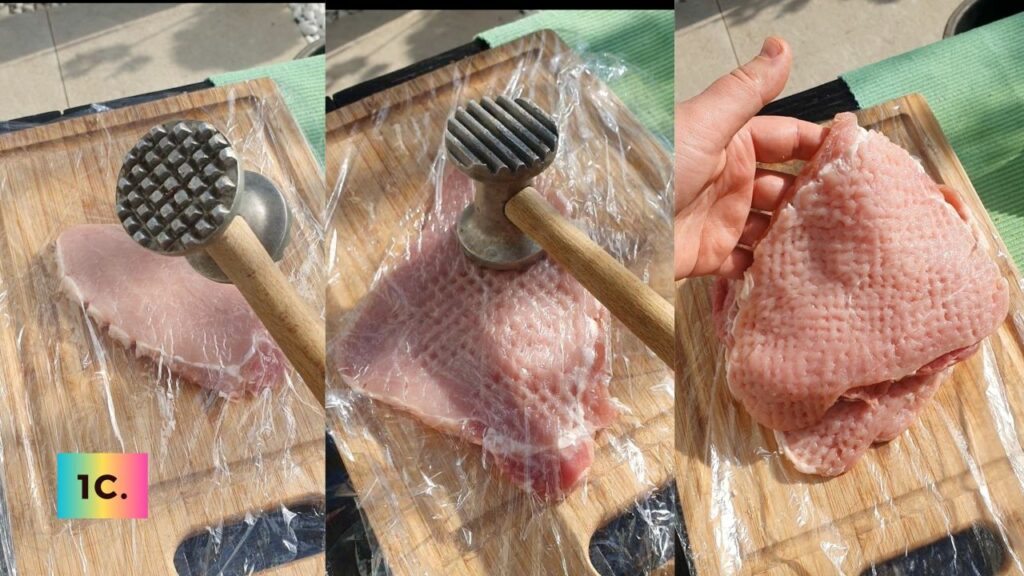
STEP 2.
Prepare the Milk Marinade. Place the meat in a bowl and pour the milk over it. Then add the onion, sliced into thin strips, the garlic cloves (lightly crushed with a knife), pepper, and salt (about 1 teaspoon of salt and ½ teaspoon of pepper), marjoram or oregano, and Dijon mustard (preferably Dijon mustard). Stir everything well, for example, with a spoon. Cover the bowl with plastic wrap and place it in the fridge. I recommend letting it marinate for at least 3 hours, but ideally, overnight. However, if you’re short on time—say, only an hour—it’s still worth making this marinade.
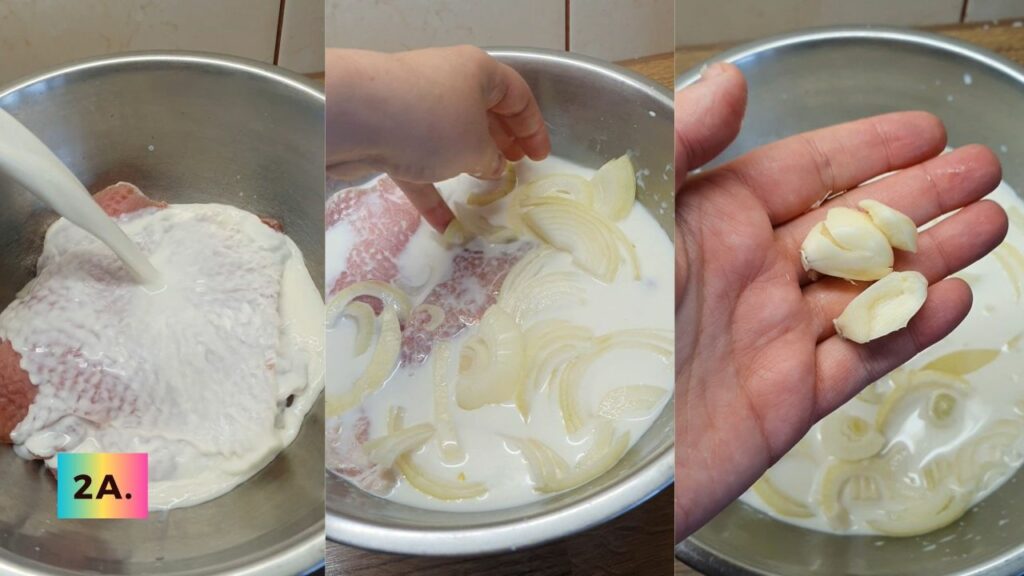
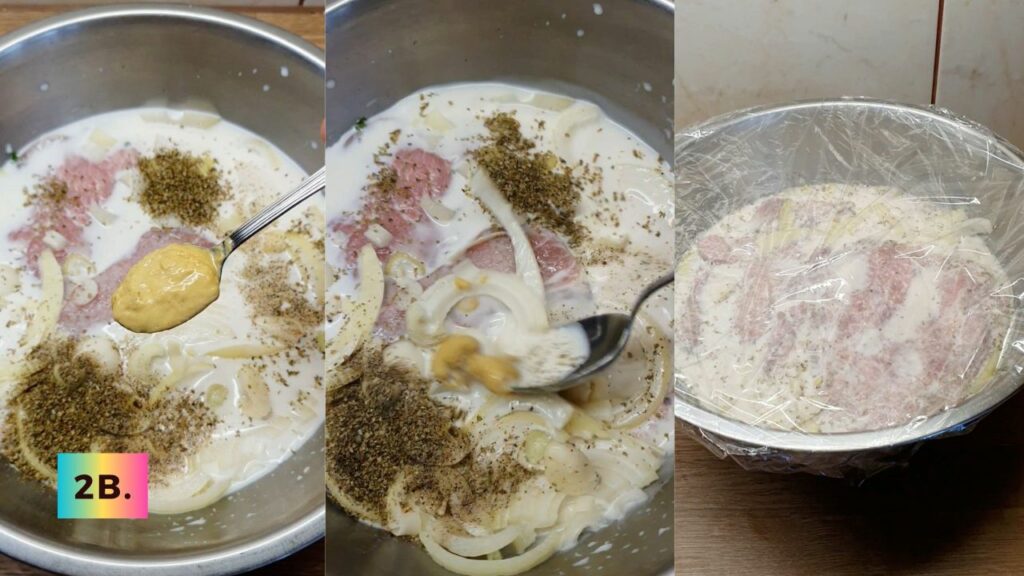
STEP 3.
Prepare 3 bowls, such as deep plates. In one, beat the eggs, in the second, place the breadcrumbs, and in the third, put the all-purpose flour. For the flour, I recommend adding a bit of salt and pepper—about ½ teaspoon of salt and 1/3 teaspoon of pepper—then mix it together with the flour.
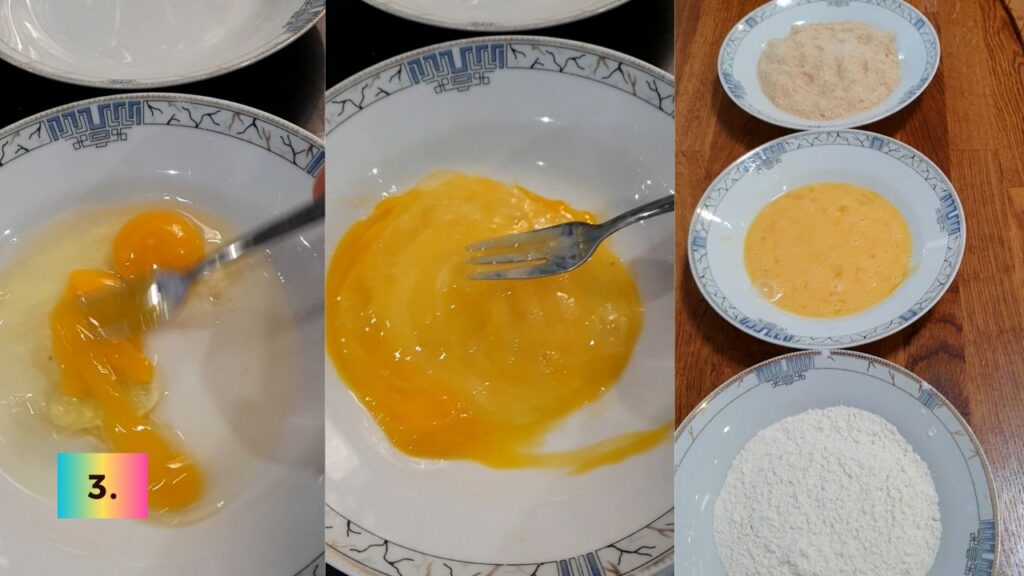
STEP 4.
Remove the pork chops from the milk and pat them dry with a paper towel. Lightly season with salt and pepper (don’t overdo it, as the milk marinade has already been seasoned). Then, coat each piece of meat first in the flour, then in the beaten egg, and finally in the breadcrumbs.
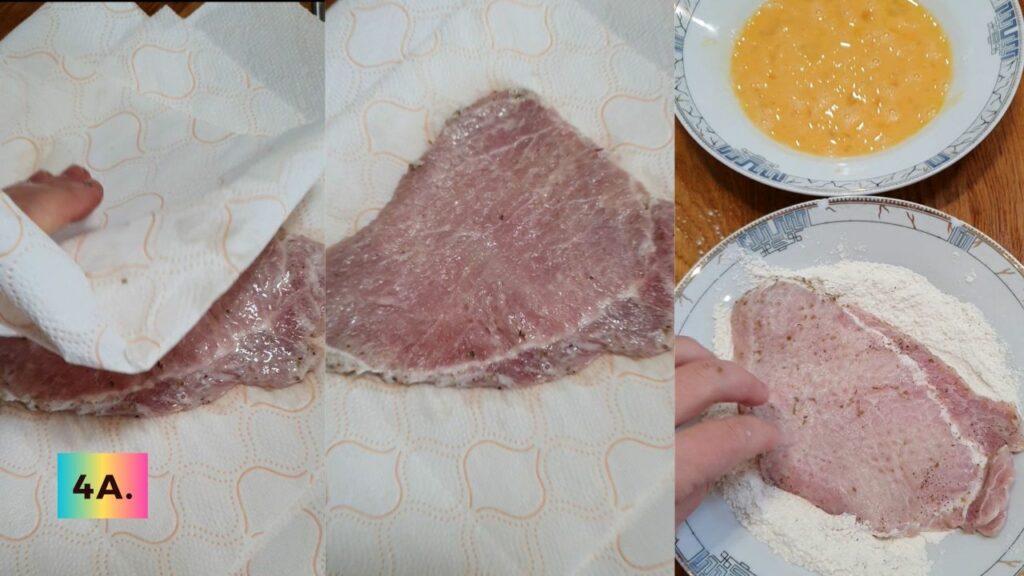
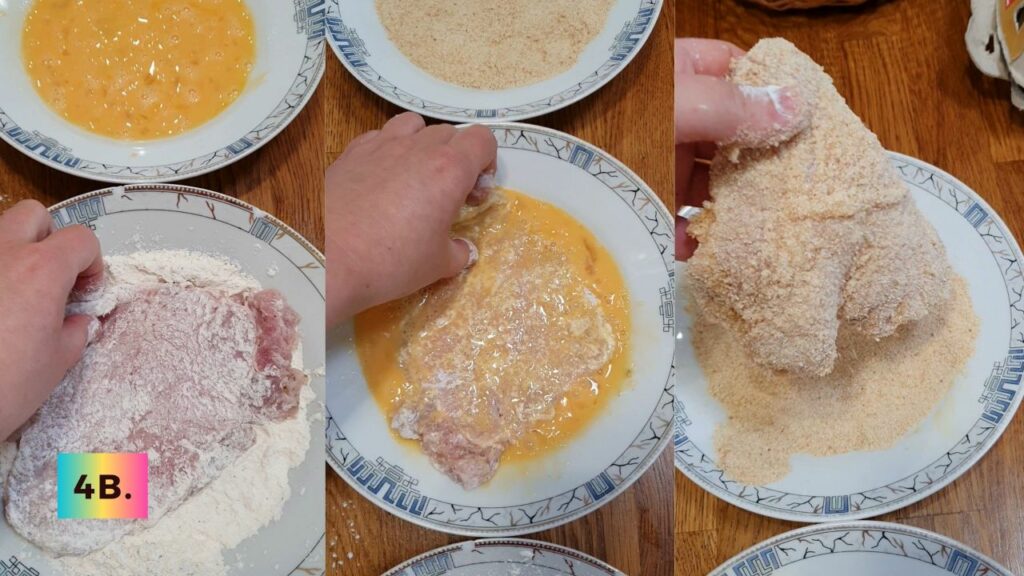
STEP 5.
Heat the fat in a pan. The best option is lard, but if you don’t have it, you can use clarified butter or vegetable oil. Once the fat is hot, place the pork chops in the pan and fry them over medium heat for about 2 minutes on each side (if the chops are thin, 2 minutes will be enough, but if they are thicker, fry for 3–4 minutes on each side) until the coating becomes golden and crispy. Before frying the next batch, carefully wipe the pan with a paper towel. If necessary, add more fat after frying each batch of chops.
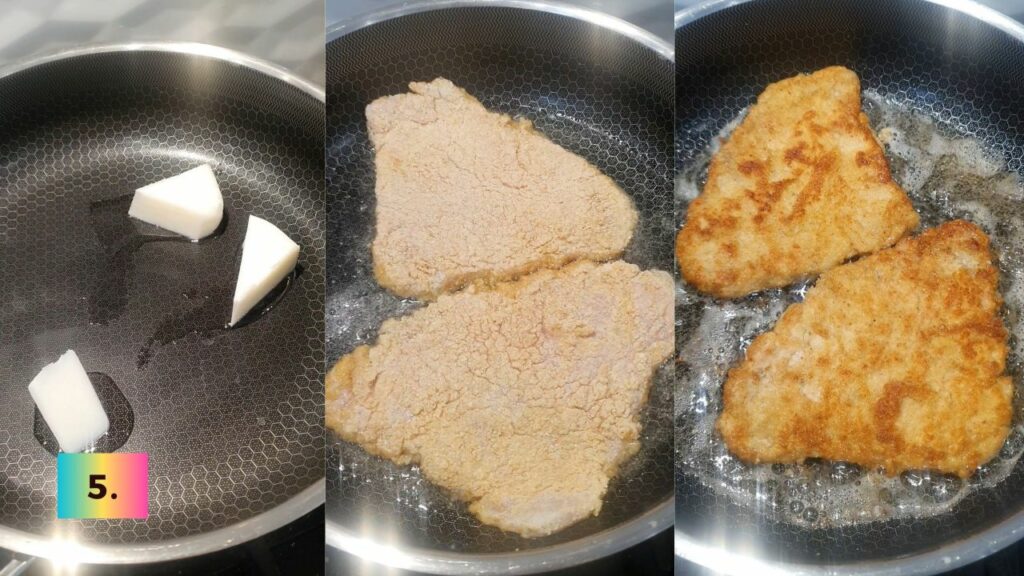
Wishing you a delicious and wonderfully blessed day filled with joy! ♥
If you want to enjoy your cutlets the Polish way, here’s what you need on your plate:
🥔 Mashed potatoes – Creamy, buttery, and often sprinkled with fresh dill.
🥒 Mizeria – A refreshing cucumber salad with sour cream and a hint of lemon juice.
🥬 Sauerkraut – Either served cold or stewed with onions for a rich, tangy flavor.
🟣 Warm beet salad – Grated beets cooked with a touch of vinegar and sugar.
🥕 Carrot and apple slaw – Sweet and crunchy, perfectly balancing the richness of the cutlets.
🌍 International Takes on Pork Cutlets:
If you’re from an English-speaking country or want to mix things up, here are some delicious ideas:
🥔 Roasted or mashed potatoes – Classic and comforting, sometimes with gravy in the UK or US.
🥗 Coleslaw – A creamy or vinegar-based cabbage salad, especially popular in the US.
🌽 Steamed veggies – Green beans, carrots, or peas for a lighter side.
🥔 Potato salad – A must-have at BBQs in the US and Australia, and a great cutlet companion!
🍏 Apple sauce – A nod to German cuisine, where cutlets are often paired with something sweet.
🥬 Garden salad – A fresh side with a simple vinaigrette to cut through the crispy crust.
No matter how you serve it, pork cutlets are always a winner! 🏆 Crispy on the outside, juicy on the inside – and with the perfect sides, it becomes a meal to remember. What’s your favorite way to serve it? Let me know in the comments! ⬇️😊
Nutritional Value 📊
This recipe makes about 7–8 pork cutlets.
One cutlet (1/8 of the total recipe) contains approximately:
🔥 Calories: 326 kcal
💪 Protein: 25 g
🥑 Fat: 17.8 g
🍞 Carbohydrates: 14.9 g
Perfectly balanced for a satisfying and delicious meal! 😋🍽️
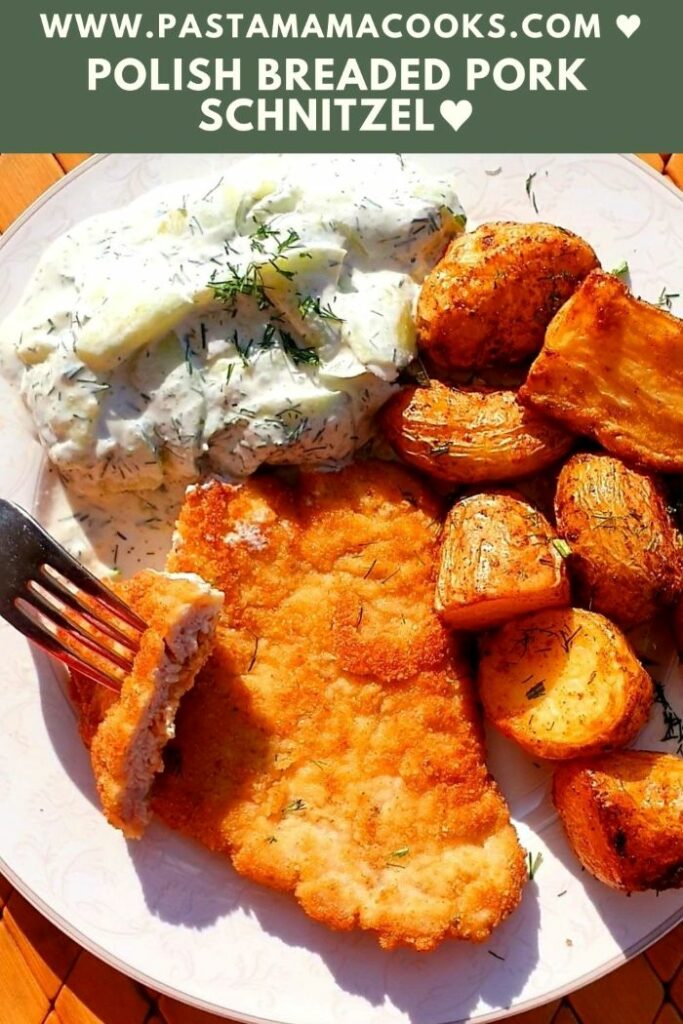
Authentic Polish Kotlet Schabowy – The Best Breaded Pork Cutlets. Printable Recipe.

Authentic Polish Kotlet Schabowy – The Best Breaded Pork Cutlets.
Ingredients
- About 800 g (1.75 lbs) of boneless pork loin (center-cut), sliced into 7–8 cutlets, each about 1.5 cm (⅔ inch) thick
- 2 large eggs, beaten (add an extra egg if needed)
- 1 cup of breadcrumbs (add more if necessary)
- 1 cup of all-purpose flour (optional: mix with ½ teaspoon of salt and ½ teaspoon of black pepper)
- Fat for frying – preferably lard, clarified butter, or vegetable oil (use as needed)
Ingredients for the Milk Marinade:
- About 500 ml (2 cups) of milk
- 2 large or 3 small garlic cloves, peeled and slightly crushed with a knife
- 1 medium onion, peeled and sliced
- 1 heaping teaspoon of marjoram or oregano
- 1 heaping teaspoon of mustard (e.g., Dijon) – optional
- 1 teaspoon of salt
- ½ teaspoon of black pepper
Instructions
- Start by preparing the meat. Place the pork on a cutting board and grab a sharp knife (preferably a long, wide one). Cut the pork into cutlets of roughly the same thickness (about ½ inch or 1.5 cm). This ensures they fry evenly and are cooked through at the same time. If the pork has thicker layers of fat, gently slice through them in a few spots. Once cut, the pork cutlets are ready to be pounded.How to Pound the Meat? Gently but firmly tap the meat with a meat mallet. Start from the center and work your way outward, aiming to keep the thickness about ¼ inch or 0.5 cm. Don’t hit too hard to avoid tearing the meat, but firm enough to make it tender and juicy. Pound both sides of each cutlet. The key is to do this with care—too much force can damage the meat’s structure. It’s best to start with one side, then flip the cutlet over and gently pound the other side once it’s flattened.Why Cut the Fat? Cutting the fat around the edges of the cutlet helps prevent it from curling up while frying. The fat and connective tissue shrink when exposed to high heat, which can cause the cutlet to curl or shrink on the pan. By making a few small cuts through the fat, you allow the meat to cook evenly, keeping the cutlet flat, well-cooked, and ensuring a crispy coating all around.
- Prepare the Milk Marinade. Place the meat in a bowl and pour the milk over it. Then add the onion, sliced into thin strips, the garlic cloves (lightly crushed with a knife), pepper, and salt (about 1 teaspoon of salt and ½ teaspoon of pepper), marjoram or oregano, and Dijon mustard (preferably Dijon mustard). Stir everything well, for example, with a spoon. Cover the bowl with plastic wrap and place it in the fridge. I recommend letting it marinate for at least 3 hours, but ideally, overnight. However, if you’re short on time—say, only an hour—it’s still worth making this marinade.
- Prepare 3 bowls, such as deep plates. In one, beat the eggs, in the second, place the breadcrumbs, and in the third, put the all-purpose flour. For the flour, I recommend adding a bit of salt and pepper—about ½ teaspoon of salt and 1/3 teaspoon of pepper—then mix it together with the flour.
- Remove the pork chops from the milk and pat them dry with a paper towel. Lightly season with salt and pepper (don’t overdo it, as the milk marinade has already been seasoned). Then, coat each piece of meat first in the flour, then in the beaten egg, and finally in the breadcrumbs.
- Heat the fat in a pan. The best option is lard, but if you don’t have it, you can use clarified butter or vegetable oil. Once the fat is hot, place the pork chops in the pan and fry them over medium heat for about 2 minutes on each side (if the chops are thin, 2 minutes will be enough, but if they are thicker, fry for 3–4 minutes on each side) until the coating becomes golden and crispy. Before frying the next batch, carefully wipe the pan with a paper towel. If necessary, add more fat after frying each batch of chops.
Video
